Adlwell-Schachter Chapter 13
Click on a musical example for playback
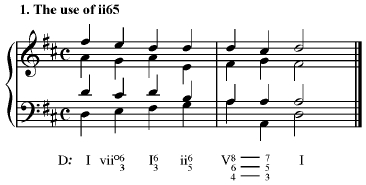
ii65 is the most frequently-used of all the ii7 chords. The 7th of the chord is ^1. Prepare that 7th carefully: it should be present in the preceding chord whenever possible. Here ii65 is being prepared by a preceding I6, preparing the 7th in the soprano. ii65, like ii63, is a predominant and here is used as predominant to a cadential 64.
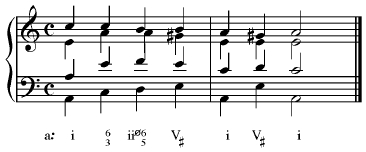
Instead of acting as predominant to a cadential 64, ii65 can of course move directly to the dominant. In this example, ii65 is being used to support ^2 in the soprano; note that the alto voice is preparing the 7th.
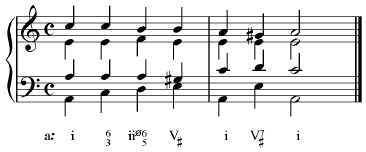
This example is rather similar to the previous, but here the preparation occurs in the tenor instead of in the alto. Note that in all three examples that ^1, when part of ii65, invariably resolves downwards to ^7. The 7th of a seventh chord resolves downwards and by step.
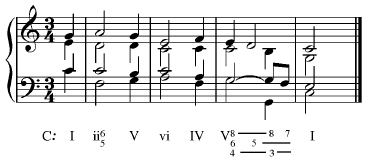
ii65 also supports ^6 in the soprano. Given that ^6 is generally an active tone, it is resolving downwards to ^5 as it should. It cannot move to ^7: the necessary resolution of ^1 to ^7 would create a doubled leading tone.
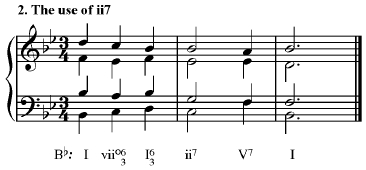
ii7 is also quite common. It is easily approached by I63; note that the preparation is in the soprano in this case. Like all seventh chords, the 7th (^1) must resolve downwards and by step, to ^7.
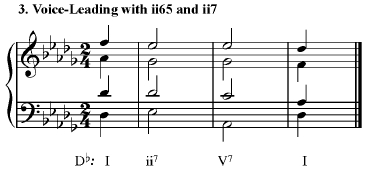
Motion directly from I to ii7 is possible—unlike motion from I to ii, which is often unsuccessful. However, to avoid voice-leading problems, it will be most advisable for the ii7 to be incomplete: double the root of the chord and omit the 5th.
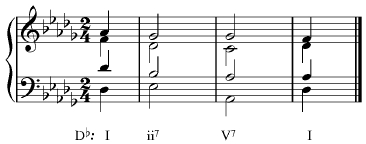
This is an error: the 7th of the ii7 has not been prepared, and it could have been. (If it is impossible to prepare the 7th, of course we aren’t obliged to do so.) Exchanging the alto and tenor voices could fix the problem.
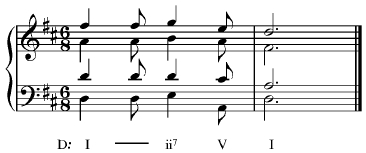
Another error: there are parallel fifths between the bass and alto. In taking care to prepare the 7th, be sure to watch out for other problems as well: don’t assume that because the 7th has been prepared that everything else is fine and dandy.
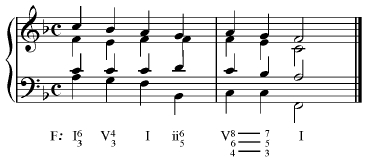
In moving from ii65 to a cadential 64, the best voice leading will prepare the ‘4’ of the cadential 64, which is the ‘5’ of the ii65. That way the ‘5’ of ii65 (i.e., the 7th of the seventh chord) will resolve properly—downwards and by step.
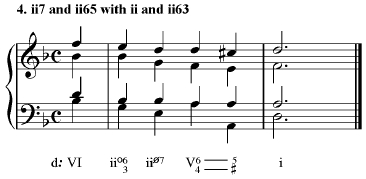
Motion from ii6 to ii7 is perfectly OK. Note in this example that ii7 is just fine in minor keys (it’s extremely interesting, in fact) whereas root-position ii is not.
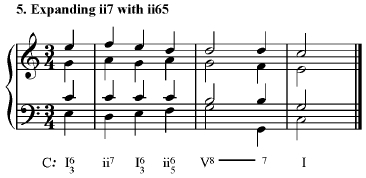
ii7 may move to ii65 (or vice-versa) through an intervening I6, which is acting as a ‘glue’ or ‘passing’ chord in this case. This is an expanded ii7—much along the same lines as an expanded I, which might expand to I6 via an intervening vii6.
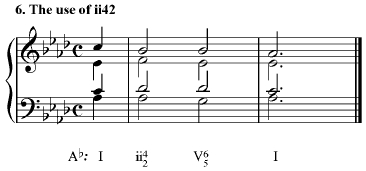
ii42 is encountered less commonly than ii7 or ii65, but it isn’t unheard of by any means. The dissonance (the 7th of the seventh chord) is in the bass and therefore requires resolution downwards—to a V65. Most 42 chords are relatively snobbish about the chords to which they will resolve.
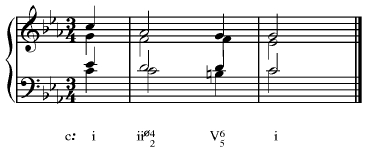
ii42 in minor keys is quite effective. Here the ^6-^5 motion reminds us of the signature use of the chord, in the song “Satin Doll” (which is, of course, in major.)
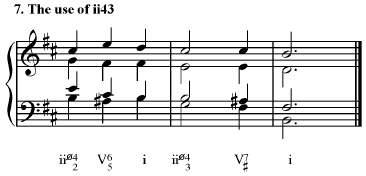
ii43 is fairly infrequent. It acts more or less identically to a IV6, although not as part of a Phrygian cadence. Because of its strongly dissonant nature, it works best moving to a V7 and not a V. (Note that the ii43 has greater significance as the ‘fundamental’ chord underlying the ‘French’ augmented sixth chord—something which will be covered near the end of the second semester.)